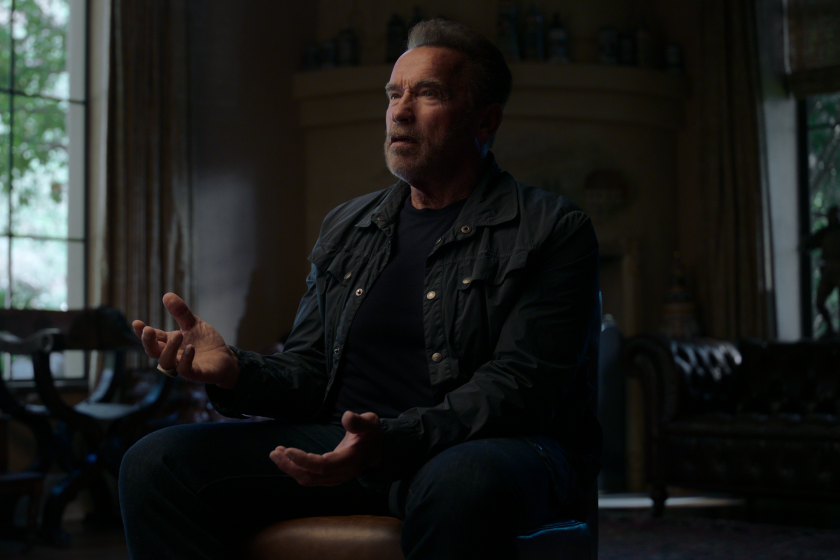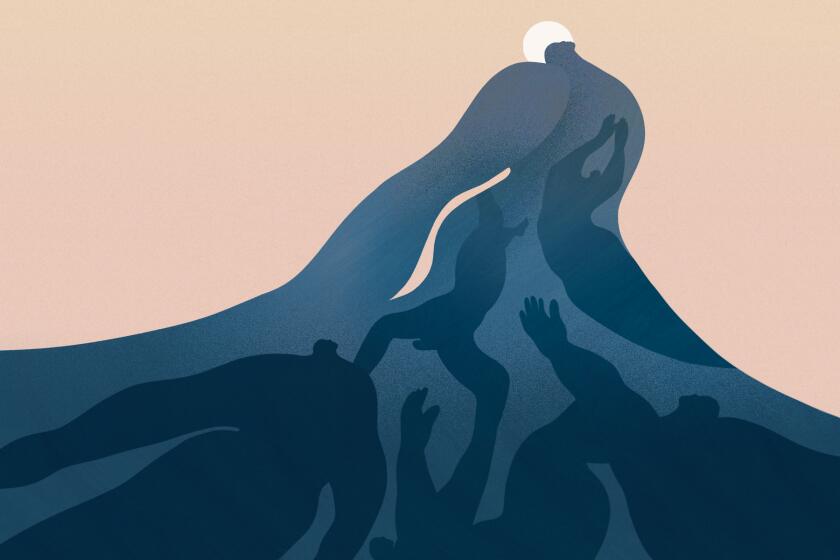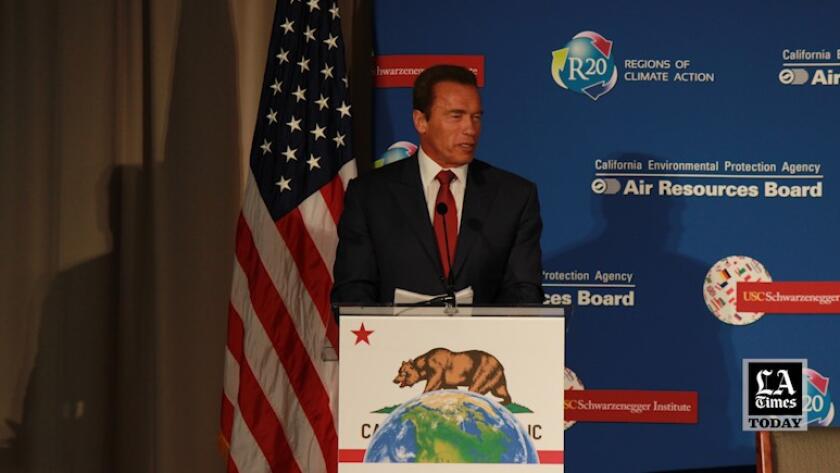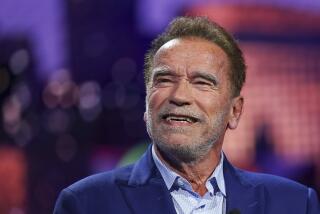Commentary: I helped break the Schwarzenegger groping story. It took him 20 years to own it
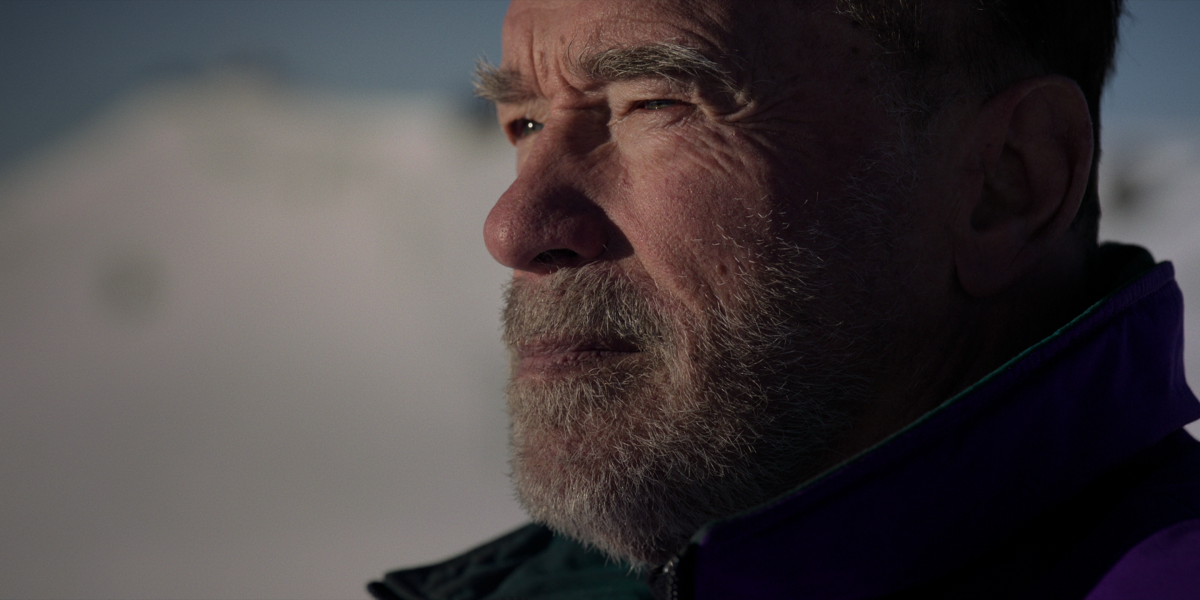
- Share via
It was late evening and I was sitting at my desk, neurotically rechecking details in an L.A. Times story I wrote with colleagues Gary Cohn and Bob Welkos breaking the news that Arnold Schwarzenegger groped and harassed women over the course of decades.
The story would be in print the next day, Thursday, Oct. 2, 2003, just five days before the election to recall the unpopular Democratic Gov. Gray Davis. The leading candidate to replace Davis was the enormously popular Schwarzenegger, running as a Republican. He was a movie star, a successful businessman — and a sexual harasser.
I deeply believed all the accounts that we had spent day and night collecting from people who had nothing to gain by talking to us — and plenty to lose if they did, especially if they worked in the entertainment industry. Some only spoke after we promised not to name them.
In Netflix’s ‘Arnold,’ Arnold Schwarzenegger apologizes for the the groping scandal that The Times reported in 2003 and how he told Maria Shriver about his affair.
Others we couldn’t convince to speak or find. I spent days trying to track down a woman named Tamee whom I heard had once told a group of people that Schwarzenegger had cornered and manhandled her.
I called a friend of hers who told me Tamee wouldn’t speak to me. I went to the friend’s house on the Westside one sunny weekday morning hoping to persuade her to help me reach Tamee. When she opened the door, I identified myself and offered her a candle in a pretty gift bag I had brought as some kind of offering. (What was I thinking?) She was livid. “How dare you come to my home,” she said, seething. I shrunk away from the door and drove downtown to the L.A. Times office.
But now the story was done. John Carroll, the former editor of the paper who had championed this investigation, was strolling the newsroom talking to people who were there late, shepherding the story into print. He was pleased with the story and stopped by my desk to chat. A calm, courtly man, he didn’t waste words. He started to walk away from my desk and turned back. “You know we’re going to get attacked for this,” he said matter-of-factly. “Don’t worry about it.”
In that moment, I thought he was the most fearless person I’d ever met. I could feel my anxiety recede.
I unearthed these memories of the story last year before I was interviewed by Lesley Chilcott, the director of the Netflix documentary series on Schwarzenegger that begins streaming Wednesday. In many ways, the paper was in uncharted territory taking on this kind of investigation into accusations of groping and other boorish behavior on the part of a movie star running for governor. This was 14 years before the #MeToo movement would upend much of society’s tolerance for the sexual misconduct of powerful men (and some women).
If you were in a newsroom during #MeToo, you know it wasn’t a witch hunt; it was like watching a mile-high dam break.
The story hit the front page like a bombshell. The morning started with Schwarzenegger publicly acknowledging that he had “behaved badly sometimes” and apologizing to anyone he offended. But that didn’t stave off the phone calls and emails assailing us for running the story so close to election day and accusing of us of colluding with the Democratic Party (false and ridiculous.) However, we also got a barrage of tips. Editors put more reporters on the story.
That afternoon, my phone rang. I picked it up and a voice said, “Hi, Carla, I think you’ve been looking for me. This is Tamee.” I was stunned — and moved. After weeks of looking for her, she had found me. Tamee Smith’s recollections of Schwarzenegger following her into a bathroom on a studio lot and grabbing her breast were published in a follow-up story on Oct. 5.
Still, this mythology that we held the story and deliberately ran it close to the election took root. A journalist for another publication said on a TV talk show that she had a source who told her we had held the story. It was ludicrous and it was infuriating. As I have said for the last 20 years, we did not hold the story. We had barely two months between Schwarzenegger announcing his candidacy and the election to find people, persuade them to talk, interview them and corroborate the stories we felt were solid. Most news investigations take months or longer to complete. In a normal political campaign lasting a year or more, there would be much more time to do this kind of reporting. But no matter when you were done, it wouldn’t make sense from any point of view to hold the story.
We discussed going on TV talk shows to explain and defend the timing. But the paper’s position was that the story speaks for itself. Eventually Carroll wrote a thoughtful, smart commentary explaining how the story came together.
I always regretted that decision to stay quiet. Journalism was in a transitional period, from a time in which news organizations didn’t feel a published story needed to be explained or promoted to one in which they have to sell the stories through other media platforms. These days, we have an entire daily show, “LA Times Today” on the cable channel, Spectrum News 1, devoted to reporters and editors talking about their stories.
In total, we published accounts from at least 15 women claiming they were groped or sexually harassed by Schwarzenegger. I couldn’t imagine how people could elect him just a few days later as the state’s top lawmaker. Had he not forfeited his right to hold that kind of honor and responsibility by harassing women?
It’s interesting to hear Schwarzenegger more fully apologize in Chilcott’s series. Admitting he had once been defensive about the accusations, he says in one episode, “Forget all the excuses, it was wrong.” I’m glad to hear that. I hope he means it.
- Share via
Watch L.A. Times Today at 7 p.m. on Spectrum News 1 on Channel 1 or live stream on the Spectrum News App. Palos Verdes Peninsula and Orange County viewers can watch on Cox Systems on channel 99.
More to Read
A cure for the common opinion
Get thought-provoking perspectives with our weekly newsletter.
You may occasionally receive promotional content from the Los Angeles Times.
